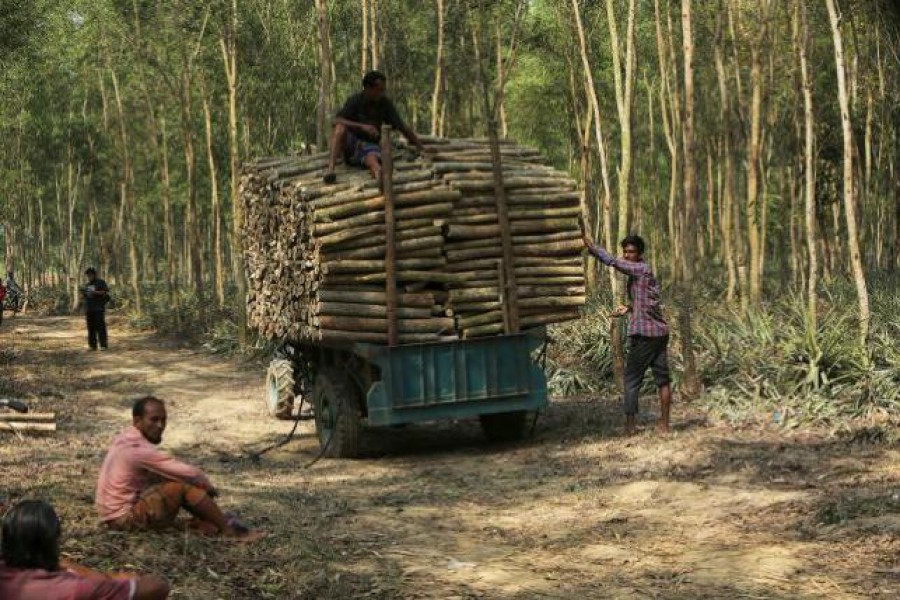At a meeting of the standing committee on the Ministry of Environment, Forest and Climate Change (MEFCC), the Department of Forest informs that 287,452 acres of the country's total 4,646,700 acresof forest land are under illegal occupation. In a country where land-grabbing is rampant, encroachment of forests is hardly surprising. The good news, as the forest department claims, is that 8,791 acresof forest land could be recovered from such illegal occupation over the past five years. Does this mean that no fresh encroachment occurred during this period or was it the net gain after loss of certain portion of forest land to encroachers? Besides, 160,239 acres of the forest area has been allocated to different organisations and institutes. This, however, does not present a clear picture if the country's deforestation process has been stalled or slowed by official intervention.
To have authentic information on this process is highly crucial because reports on the total forest cover in the country vary widely. According to a government portal, the size of the total forest area is 2.6 million hectares accounting for 17.4 per cent of the country's land area. IndexMundi, a data portal, reports that forest cover was as low as 10.96 per cent in 2016. According to the Asian Development Bank data of 2016, Bangladesh with 11.2 per cent forest cover wallowed at the bottom notches among Asian countries having the least forest cover. If the forest areas vary, they must have a plausible explanation. Which of the three types of forest --- the evergreen, deciduous in the hilly areas, plain-land forest mostly of sal trees and littoral mangroves -- have thrived over the past four years that the tree cover has registered a jump from around 11 per cent to 17.4 per cent now? If social forestry has been responsible for the spectacular gain, the country is surely on the right track. But if the figures are the result of mere paperwork, it will do more harm than good to this small country's effort towards bettering green cover and environment.
The standing committee on the ministry of environment, forest and climate change has, however, made its intent clear: it wants to recover every inch of forest land from illegal occupation. One may ask why a blind eye was turned to this issue for so long. Once a dense forest, Madhupur in Tangail has been ravaged and occupied by encroachers in ingenious ways. Even saw mills were set up within and the authorities had to launch eviction drives against several such commercial infrastructures. If the sal forest there still maintains its existence, the forest and woodland of Bhawal, once an extended portion of Madhupur, has been denuded so extensively that it is now limited to the Bhawal National Park.
The forest department's information that 90,000 individuals and organisations have illegally occupied forest lands has prompted the standing committee to ask for the names of encroachers. This is the crux of the problem. As the forest department reveals, influential local people and industrialists have tinkered with land records and come up with stay order from courts whenever eviction drive is launched. If the standing committee on the MEFCC means business, it will have to circumvent such dishonest tactics resorted to by encroachers and decide modalities for taking action against encroachers irrespective of their socio-political status.


